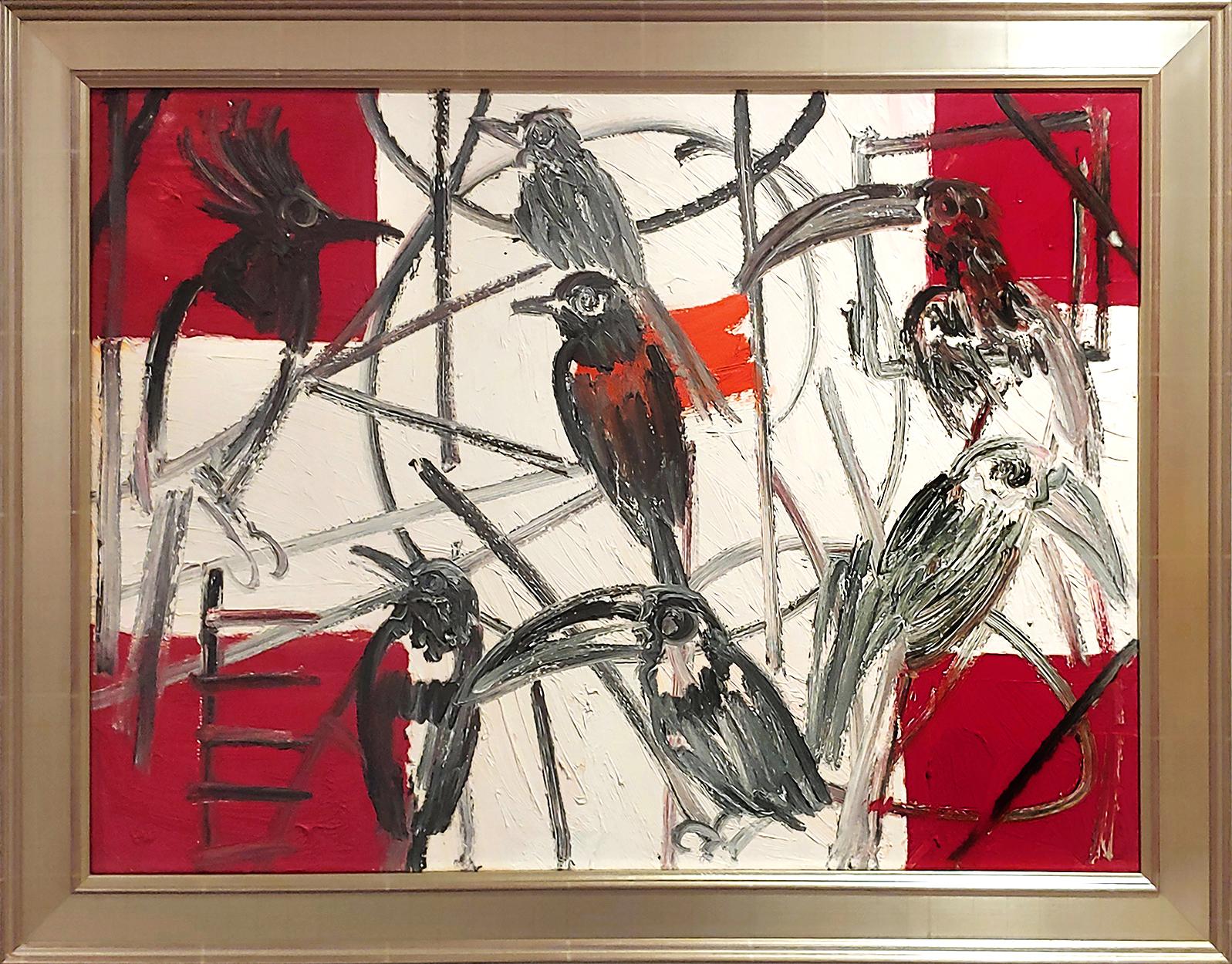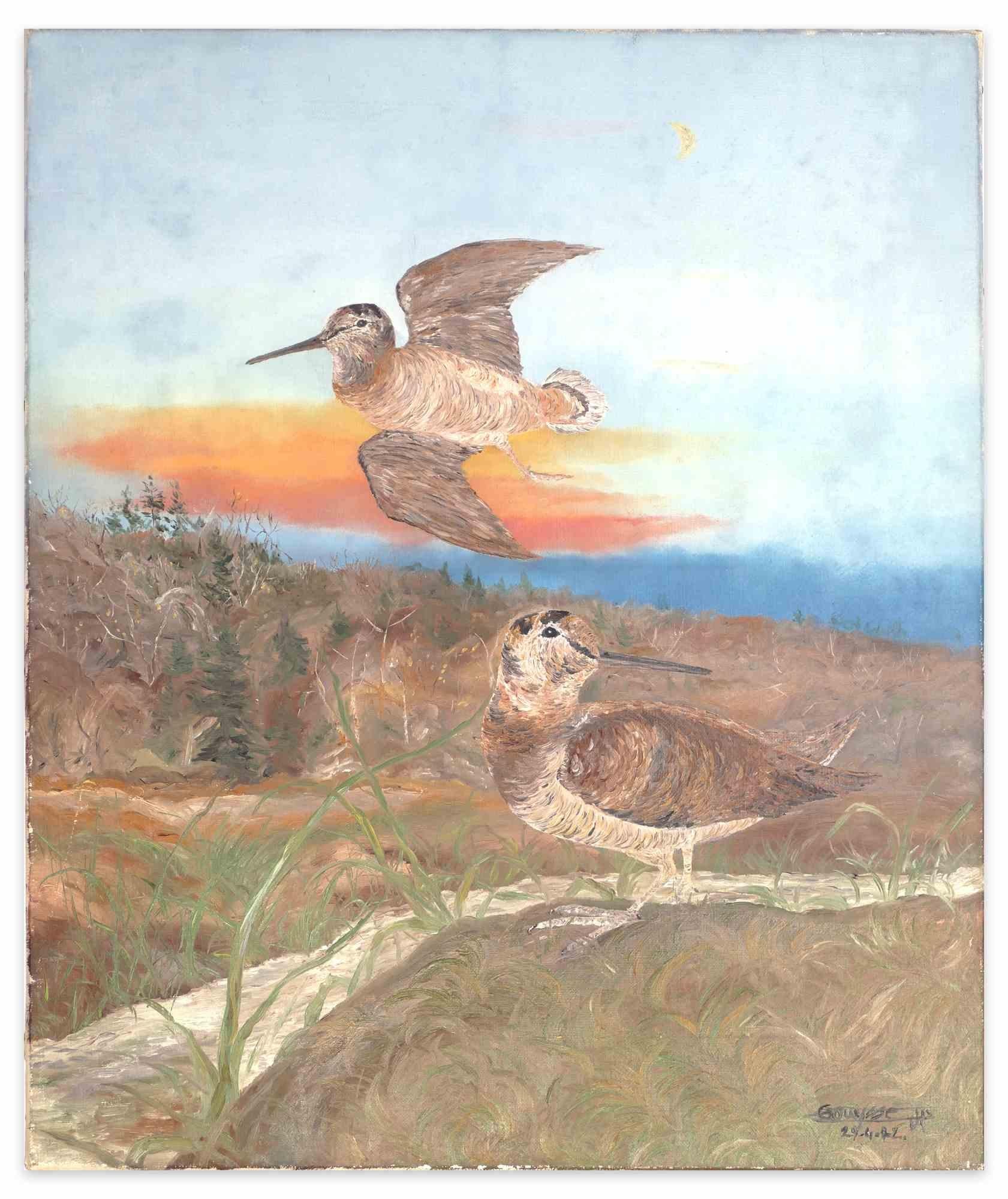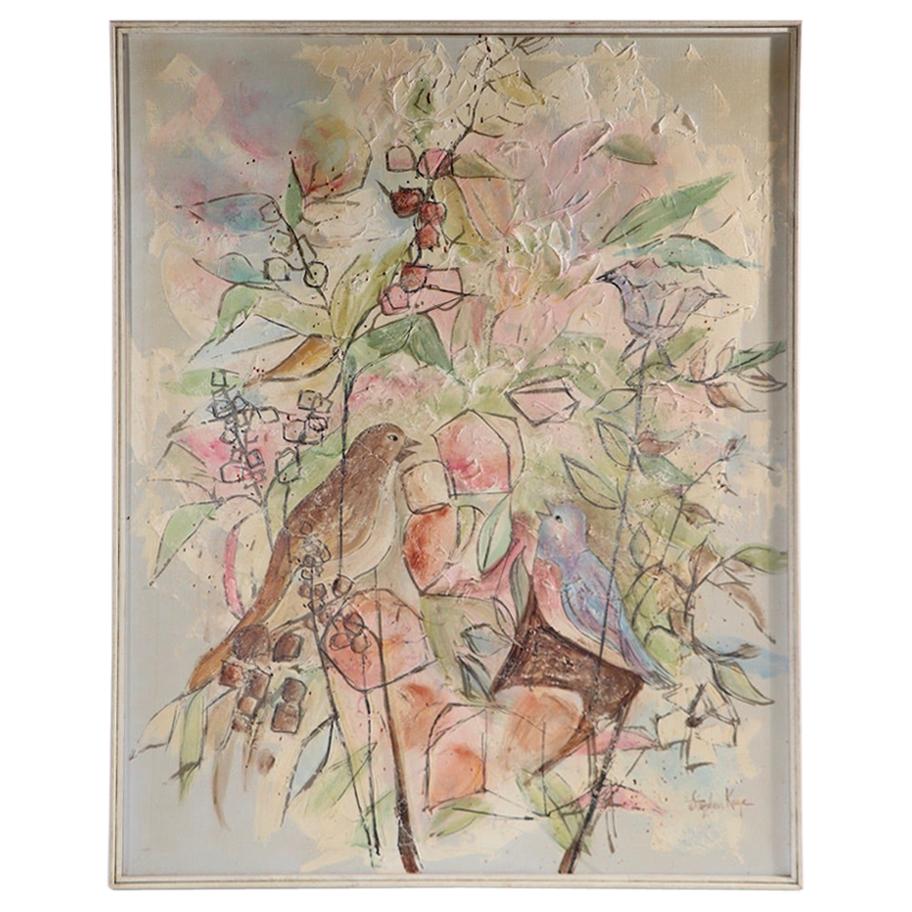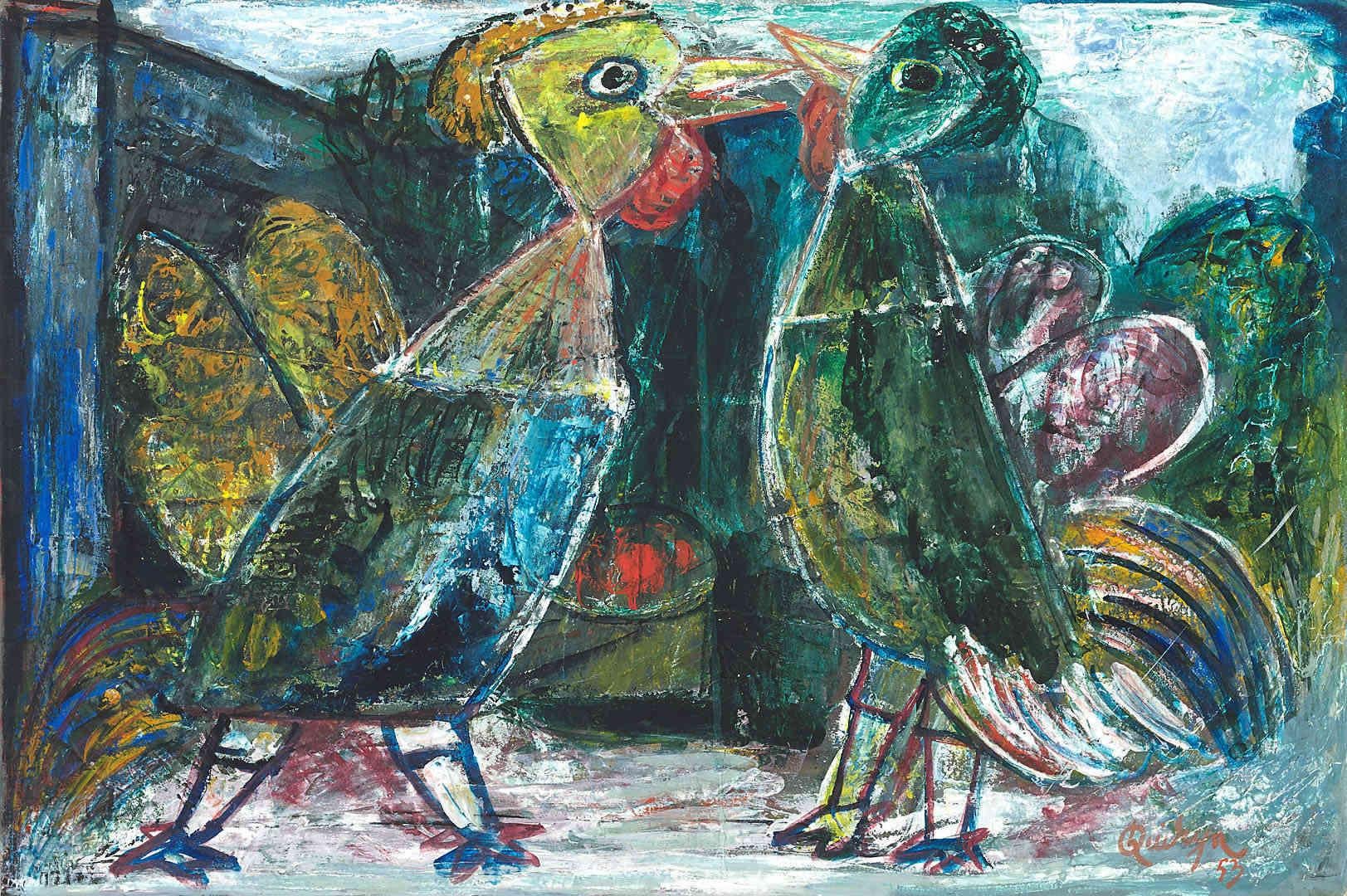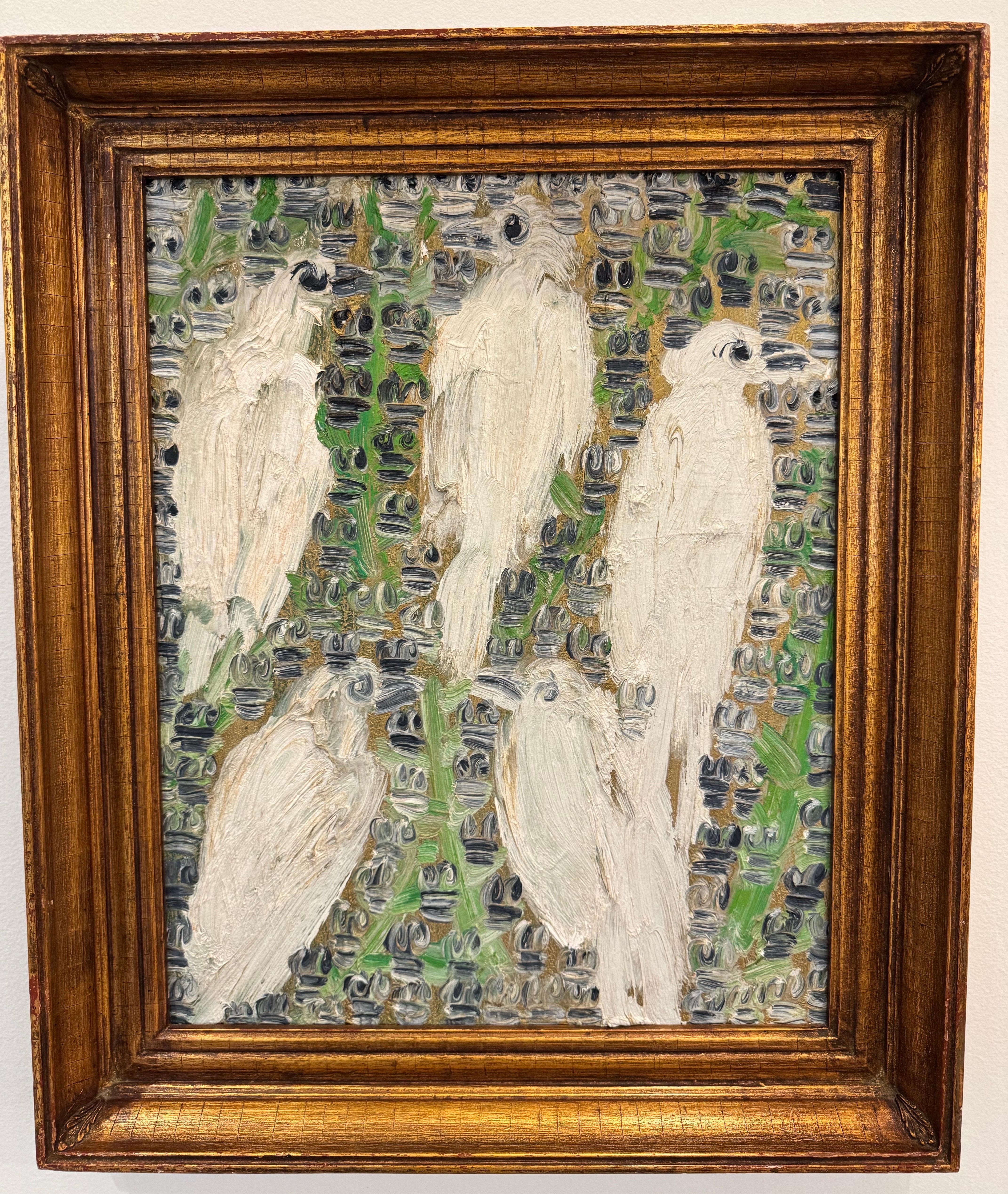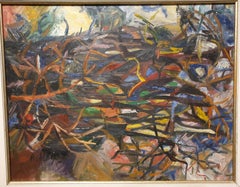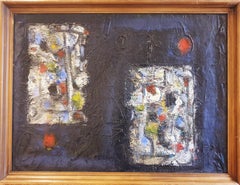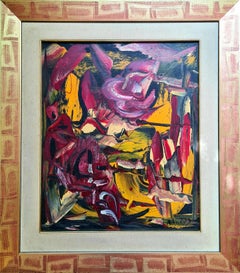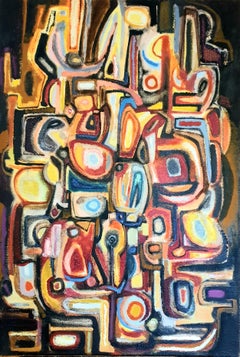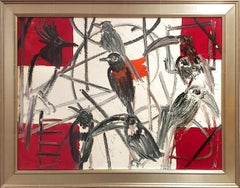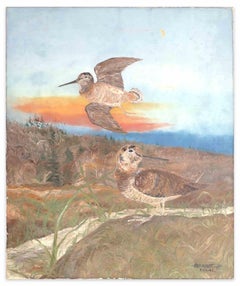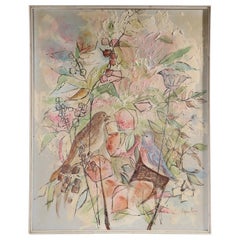Items Similar to French Mid-Century Oil on Canvas, Birds in Flight
Want more images or videos?
Request additional images or videos from the seller
1 of 17
Hyppolite RogerFrench Mid-Century Oil on Canvas, Birds in Flight
$715.78
$894.7220% Off
£529.12
£661.3920% Off
€600
€75020% Off
CA$992.82
CA$1,241.0320% Off
A$1,082.39
A$1,352.9920% Off
CHF 571.92
CHF 714.8920% Off
MX$13,310.87
MX$16,638.5920% Off
NOK 7,111.30
NOK 8,889.1320% Off
SEK 6,694.35
SEK 8,367.9420% Off
DKK 4,568.69
DKK 5,710.8620% Off
About the Item
French Mid 20th Century oil on canvas Fauvist painting of birds in flight by Hyppolite Roger. The painting is signed bottom left and also to the back of the canvas. There is also a retailer stamp on the stretcher for Papeterie Rontani a notable artists' supply shop in Nice, South of France.
A wonderful, vibrant and colourful painting of birds in flight. Roger has used a coarse canvas which with the use of vibrant colour gives a pleasing texture to the painting. A great composition and painted with such energy. The very quick brushstrokes and myriad of colours filling the canvas create a swirl of activity as the birds whirl in flight.
Fauvism was a style of painting that flourished in France around the turn of the 20th century. Fauve artists used pure, brilliant colour aggressively applied straight from the paint tubes to create a sense of an explosion on the canvas.
The Fauves painted directly from nature, as the Impressionists had before them, but Fauvist works were invested with a strong expressive reaction to the subjects portrayed. First formally exhibited in Paris in 1905, Fauvist paintings shocked visitors to the annual Salon d’Automne; one of these visitors was the critic Louis Vauxcelles, who, because of the violence of their works, dubbed the painters fauves (“wild beasts”).
The leader of the group was Henri Matisse, who had arrived at the Fauve style after experimenting with the various Post-Impressionist approaches of Paul Gauguin, Vincent van Gogh, and Georges Seurat. Matisse’s studies led him to reject traditional renderings of three-dimensional space and to seek instead a new picture space defined by movement of colour. He exhibited his famous Woman with the Hat at the 1905 exhibition. In this painting, brisk strokes of colour—blues, greens, and reds—form an energetic, expressive view of the woman. The crude paint application, which left areas of raw canvas exposed, was appalling to viewers at the time.
- Creator:Hyppolite Roger (French)
- Dimensions:Height: 14.97 in (38 cm)Width: 18.12 in (46 cm)Depth: 0.79 in (2 cm)
- Medium:
- Period:
- Condition:
- Gallery Location:Cotignac, FR
- Reference Number:Seller: GB/Hyppolite/Birds.1stDibs: LU1430212833162
About the Seller
5.0
Platinum Seller
Premium sellers with a 4.7+ rating and 24-hour response times
Established in 2000
1stDibs seller since 2020
263 sales on 1stDibs
Typical response time: 1 hour
- ShippingRetrieving quote...Shipping from: Cotignac, France
- Return Policy
Authenticity Guarantee
In the unlikely event there’s an issue with an item’s authenticity, contact us within 1 year for a full refund. DetailsMoney-Back Guarantee
If your item is not as described, is damaged in transit, or does not arrive, contact us within 7 days for a full refund. Details24-Hour Cancellation
You have a 24-hour grace period in which to reconsider your purchase, with no questions asked.Vetted Professional Sellers
Our world-class sellers must adhere to strict standards for service and quality, maintaining the integrity of our listings.Price-Match Guarantee
If you find that a seller listed the same item for a lower price elsewhere, we’ll match it.Trusted Global Delivery
Our best-in-class carrier network provides specialized shipping options worldwide, including custom delivery.More From This Seller
View All"Les Brindilles". Mid-Century French Expressionist Oil on Board.
Located in Cotignac, FR
Mid-Century oil on board by 20th century artist Ahlan Achoy, signed bottom left.
Ahlan Achoy was known for his figurative art and portraiture often in the cubist style. This colourf...
Category
Mid-20th Century Expressionist Abstract Paintings
Materials
Oil, Board
$687 Sale Price
32% Off
'Monogrammes'. French Mid-Century Abstract Expressionist. Oil on Canvas.
Located in Cotignac, FR
A mid-century abstract expressionist oil on canvas presented in a plain wooden frame. The work is titled and there are initials 'G.O.' (artist?) on a label to the rear stretcher as w...
Category
Mid-20th Century Contemporary Abstract Paintings
Materials
Canvas, Oil
French Abstract Expressionist Oil on Canvas, Les Alliance au Crepuscule
Located in Cotignac, FR
French late 20th Century Abstract Expressionist oil on canvas by Abstrus. The painting is signed bottom right and signed titled and dated to the rear stretcher. Presented in a fine b...
Category
Late 20th Century Abstract Expressionist Abstract Paintings
Materials
Canvas, Oil
Mid-Century French Abstract Expressionist Oil on Canvas.
Located in Cotignac, FR
A large mid-century French abstract expressionist oil and acrylic on canvas by Jean-Louis Ladislas. Signed and dated 69 to the reverse. Presented in a slim baton wood frame.
A highl...
Category
1960s Abstract Expressionist Abstract Paintings
Materials
Canvas, Oil, Acrylic
Mid-century Abstract Expressionist Oil on Canvas.
Located in Cotignac, FR
Mid-century abstract expressionist oil on canvas by French artist, André Tardieu, signed and dated 1976 bottom right. Also with signature, ...
Category
Mid-20th Century Abstract Expressionist Abstract Paintings
Materials
Canvas, Oil
Late 20th Century Abstract Expressionist Gouache on Paper.
Located in Cotignac, FR
Lyrical abstract expressionist gouache on paper by French artist Michel Loiseau. Signed bottom right.
Michel Loiseau-Rizzo, born in 1937 is an illust...
Category
Late 20th Century Abstract Expressionist Abstract Paintings
Materials
Paper, Gouache
$878 Sale Price
54% Off
You May Also Like
"Birds" Large Oil on canvas 36x46 framed.
By Hunt Slonem
Located in Southampton, NY
I just spoke with Hunt Slonem's studio regarding this special painting and the meaning behind it. Hunt said that the white cross in the middle is the most significant element, symbo...
Category
1990s Contemporary Animal Paintings
Materials
Canvas, Oil
Untitled (Birds), figurative, scene
Located in New York, NY
Oil painting depicting birds in flight against a mostly white dynamic background done with expressive brush strokes.
Russell Sharon was born on a farm in Minnesota...
Category
1990s Neo-Expressionist Paintings
Materials
Canvas, Oil
Birds - Oil painting on canvas by Jean Pierre Gouysse - 1972
Located in Roma, IT
Birds is an original contemporary artwork realized by Jean Pierre Gouysse in 1972
Mixed colored oil painting on canvas.
Hand-signed and dated on the lower right margin
Jean Pierre...
Category
1970s Modern Figurative Paintings
Materials
Oil
Acrylic Painting of Birds by Stephen Kaye
By Stephen Kaye
Located in New York, NY
Charming decorative large scale acrylic painting by noted Canadian artist Stephen Kaye. The paints depicts stylized birds in branches, on an abstract textured paint surface. Signed l...
Category
Late 20th Century Canadian Mid-Century Modern Paintings
Materials
Acrylic
Birds
Located in BLARICUM, NL
QUIRIJN VAN TIEL
Rotterdam 1900-1967 Rhoon
ROOSTERS
1953
Gouache on paper
40 x 55 cm.
signed: lower right
Category
1950s Abstract Expressionist Animal Drawings and Watercolors
Materials
Gouache
Doves 2007
By Hunt Slonem
Located in New Orleans, LA
Very nice early Hunt Slonem of Doves with vintage frame selected by the artist
Category
Early 2000s Contemporary Animal Paintings
Materials
Canvas, Oil
$11,800
More Ways To Browse
Birds In Flight
Oil On Canvas Birds
Mid Century Bird Paintings
Bird In Flight Painting
Antique Hunting Paintings
19th Century Horse Oil
Hunting Oil Painting
Maine Sculpture
Black Cat Painting
Chicken Art Painting
Dogs And Cats
Paintings Of Butterflies
Terrier Painting
Bunny Rabbits
Vintage Hunting Art
Monkey Paintings
Wildlife Oil Paintings
Horse Paintings Oil Black
